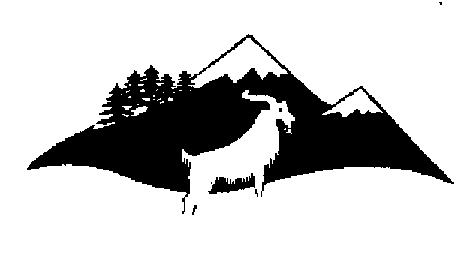
Northwest Cashmere Association
Home | Member List | Resources| Members Only | Events | Contact
Cashmere Goat Information and Resources
WHAT IS CASHMERE?
The Cashmere and Camel Hair Manufacturers Institute defines cashmere as: "The
fine (dehaired) undercoat fibers produced by a Cashmere goat (Capra hircus
laniger). The fiber is non-medullated and has a mean maximum diameter of 19
microns. The co-efficient of variation around the mean shall not exceed 24%.
There can be no more than 3% (by weight) of cashmere fibers over 30 microns.
(Reference IWTO Test Method 8). The U.S. Wool Products Labeling Act of 1939,
as amended, (U.S.C. 15 Section 68b(a)(6)) defines cashere as: (A) the fine
(dehaired) undercoat fibers produced by a cashmere goat (capra hircus laniger);
(B) the average diameter of the fiber of such wool product not exceeding 19
microns; and (C) containing not more than 3 percent (by weight) of cashmere
fibers with average diameters that exceed 30 microns. The average fiber diameter
may be subject to a coefficient of variation around the mean that shall not
exceed 24 percent". * CCMI, link below
Cashmere has long been one of the most exotic and rare fibers to be found.
The soft undercoat of hardy cashmere-producing goats has traditionally come
from nomatic herders in the remote mountains and deserts of the Orient. The
fleece of the cashmere goat is made up of two very distinct types of fiber:
one is a fine undercoat (under 19 microns) which is the source of the luxurious
fiber - the other is a coarse guard hair.
WHAT DO CASHMERE GOATS OFFER ME?
Cashmere goats offer an opportunity to compliment an existing sheep, cattle
or other animal farm. Goats also help improve pastures through weed and brush
control. We are fortunate to find that cashmere goats presently are sold for
breeding stock, fiber, weed control, meat and pelts. They are wonderful for
small homestead enterprises and 4-H projects.
HOW MUCH CASHMERE DOES A GOAT PRODUCE?
The amount of cashmere a goat produces depends on a number of factors: age,
health, pregnancy, size and genetic background. We are told that generally
a goat will produce 4 oz. of fiber a year after the fleece has been dehaired.
The amount also depends on the diameter, length and coverage of the fleece.
No wonder cashmere is so precious.
WHEN DO I SHEAR/COMB CASHMERE?
The cashmere fiber is actually the goat's winter underwear. It begins growing
in late June and ends in late December. The best time to shear is between
the end of December and the end of March when the goat will begin to shed.
Breeders with small herds have successfully combed their herds. It is a little
more labor intensive but can be commercially processed or hand dehaired. Cashmere
that has been sheared requires commercial dehairing (or lots of time and patience)
to remove the guard hair.
CARE OF CASHMERE GOATS
Goats are browsers and love brush pastures. They also do well on hay or improved
pastures. Some grain should be provided during pregnancy. Trace mineral salts
need to be available. In some areas additional selenium/ADE vitamins should
be added to the salt. Parasite control and foot trimming are a necessity for
the general good health of the goat. They are very hardy animals and good
mothers. The goats require a shelter to be able to get out of the wind and
rain. (Approx. 15 sq. ft. per goat.) Buildings can be simple sheds. A good
roof and shelter from the wind are all that is needed.
FENCING
Goats require good fences. They do not do well tied out to a stake as they
cannot defend themselves against predators. Most people prefer 4 foot woven
field fence but others have success with electric fence systems. Your main
concern is protection from predators - animal and human.
HOW CAN I START WITH CASHMERE?
Get in touch with any member of the NWCA and they will help you make a selection
that suits your needs. There is a membership list available so you can find
the breeders nearest your home. Be sure you know what you want from your goats;
pets for the children, weed control, fiber for spinning, start a herd for
breeding fine animals, meat or just because you think an animal on your farm
would be fun. You are welcome to visit member farms and they will try to answer
your questions.
THE FUTURE OF CASHMERE GOATS
We are very fortunate to be raising cashmere goats at this time in the development
of the industry. It is just barely out of its infancy and great things are
happening. The market for fiber, meat and weed control gets bigger and better
each year.
Other Information
Combing a Cashmere Goat
YouTube video by Diane Thompson in Canada does a good job explaining the process.
It is a three-parter, so check links 2 and 3 on the YouTube page.
Cashmere Goat Association
Canadian Cashmere Producers Association
Updated March 9, 2023
Home | Member List | Resources| Members Only | Events | Contact